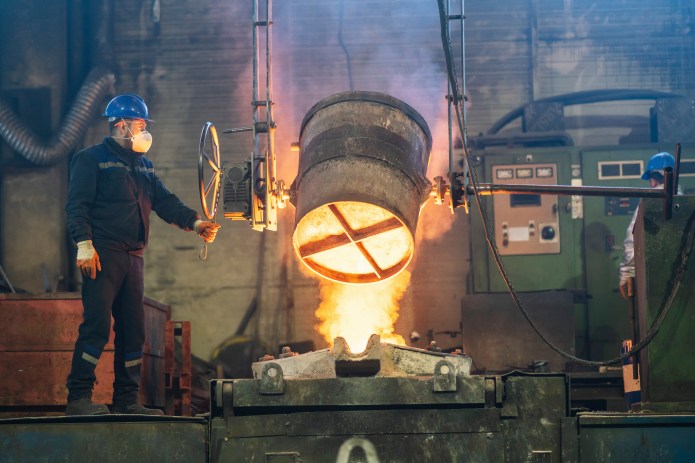Subscribe
Sign up for timely perspectives delivered to your inbox.
In the evolving landscape of global natural resources equities, multiple factors rationalise why investors should consider a strategic allocation to the asset class in 2025, according to Head of Global Natural Resources, Daniel Sullivan.

In our view, we can expect to see economically-strong countries grow through innovation and access to cheap energy sources. Importantly the US, China and India are building out a large industrial base, which requires massive amounts of commodities, which should significantly boost demand in 2025 and beyond. Future-focused materials that appear positively positioned to benefit from this multi-year demand include copper, silver, uranium, natural gas, and lithium. Gold remains an attractive commodity, currently trading near an all-time high,1 but more importantly, it is a very fast-moving sector amongst the smaller exploration and development companies that can create multi-billions of shareholder value, if successful.

We are seeing many compelling opportunities, especially among companies with high-quality assets and management teams, now trading at attractive valuations. In particular, successful explorers and developers in the metals and gold industries are bringing the next generation of growth through new developments. Opportunities to build new resource projects with lower costs and more environmentally-sensitive infrastructure will be a hallmark of these projects. We favour mid-cap companies (typically US$1 billion to US$6 billion in size). This is because we think the potential for success for these growth companies is higher given they often can use their existing assets, financial and operational strength, and strategic partnerships to benefit new growth projects, plus are probable acquisition targets.
A fascinating chart to monitor is the performance of Metals & Mining equities, particularly their historical outperformance relative to broader equities (MSCI World Index). From the tech boom peak in 2000, when Metals & Mining were ignored by the market, to the peaks of the China urbanism-driven super cycle in 2010, Metals & Mining equities outperformed MSCI World Equities by almost 400%, or +17% p.a., in the ten-year period (Figure 1).
Moreover, over the last 30-year period (1994-2024), the first quarter in a mining upturn has often delivered circa 10% outperformance (bearing in mind that past performance does not predict future returns).

Source: Bloomberg, Janus Henderson Investors, data from 31 January 1995 to 31 December 2024. Left axis rebased to 100 at 31 December 1994. Past performance does not predict future returns.
The Metals & Mining sector is currently trading very close to 30-year lows relative to global equities. In baseball terms, the natural resource bases are loaded and the potential for a grand slam is very high as global demand inexorably grows, while supply lags due to lack of investment, access to quality projects, and planners’ inability to secure this critical mineral supply chain that underpins the global economy.
However, opportunity often comes hand-in-hand with risk. An underappreciated issue facing the natural resources sector is the struggle to attract a broad enough range of talent to science, technology, engineering, and mathematics (STEM) roles. These careers entail working on some of the most important challenges to society – most notably the need to provide the essential resources for life in a safe and efficient way, while minimising the environmental damage for future generations. Attracting new talent and different ideas from underrepresented groups like women and minorities could lead to a significant payoff for society. Moreover, the integration of automation and artificial intelligence could greatly benefit many natural resource processes including exploration, extraction, production and logistics.

In the year ahead, investors should not lose sight of the importance of portfolio diversification. In a complicated world marked by geopolitical tensions, war and trade disputes, investing in high-quality, cash-generating companies that can develop and grow their businesses is crucial. Mid-to-small cap (under US$6 billion in size) mining and energy companies in particular, look to be presenting growth in production and exceptional value.
The fundamental demand for natural resources looks set to accelerate, driven by numerous factors, including the geopolitical race to secure access to critical minerals and energy, and the transition away from fossil fuels. We believe this dynamic presents a unique opportunity for investors, making now the time for strategic positioning within global natural resources equities.
1 Source: Gold.org; ICE Data Services, FactSet, gold spot price from 1970 to 21 January 2025.
Portfolio diversification is a way of spreading risk by mixing different types of assets/asset classes in a portfolio, on the assumption that these assets will behave differently in any given scenario. Assets with low correlation should provide the most diversification.
MSCI World Metals and Mining Index is composed of large and mid-cap stocks across 23 Developed Markets (DM) countries.
MSCI World Index captures large and mid-cap representation across 23 Developed Markets (DM) countries.
Commodities (such as oil, metals and agricultural products) and commodity-linked securities are subject to greater volatility and risk and may not be appropriate for all investors. Commodities are speculative and may be affected by factors including market movements, economic and political developments, supply and demand disruptions, weather, disease and embargoes.
Natural resources industries can be significantly affected by changes in natural resource supply and demand, energy and commodity prices, political and economic developments, environmental incidents, energy conservation and exploration projects.
Important information
Diversification neither assures a profit nor eliminates the risk of experiencing investment losses.